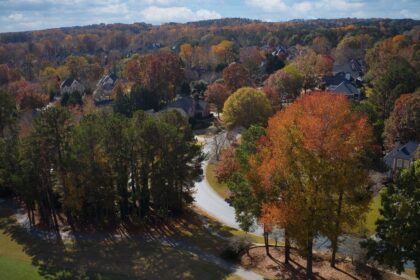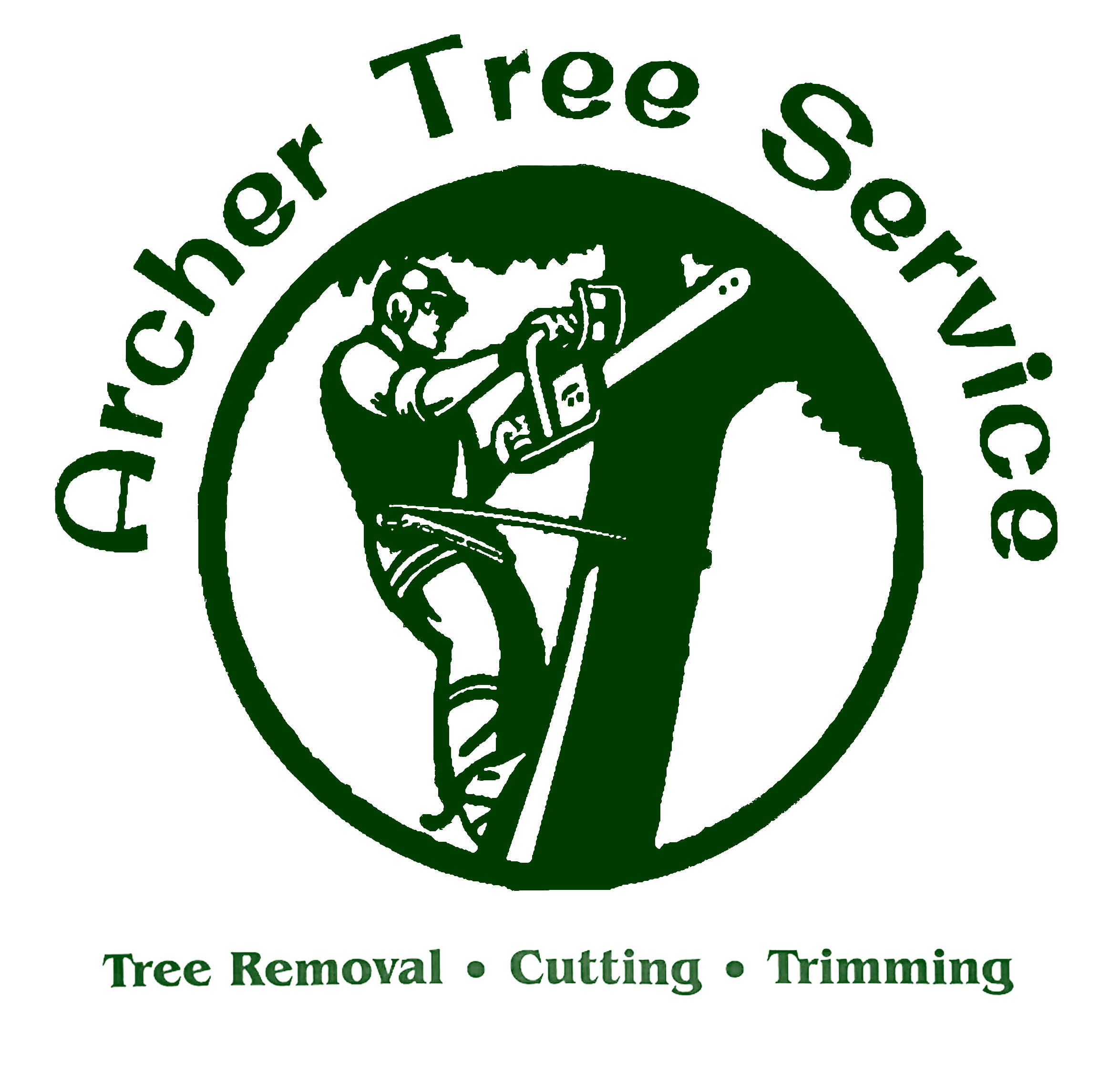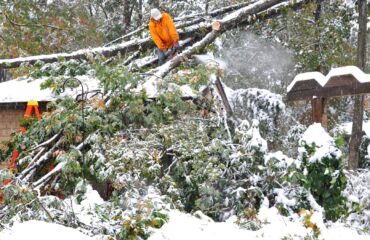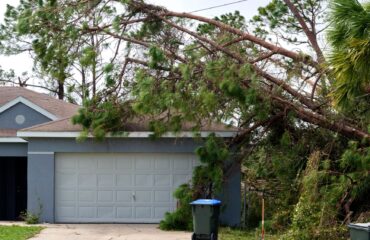
Archer’s Tips for Safeguarding Trees on Your Property
Preserving trees during construction is essential to maintain the benefits they provide future owners of the property. Injuries to trees often happen unintentionally during construction and may not be immediately apparent but can lead to long-term health issues, ultimately resulting in the tree’s decline and even death years after construction is completed.
Trees add significant value to properties by enhancing curb appeal and contributing to energy efficiency. At Archer Tree Services, we recognize that preserving trees during construction is essential for maintaining these benefits. Healthy trees not only beautify your property but also increase its market value and create a more inviting environment. They provide shade that can lower cooling costs in the summer while creating a welcoming atmosphere for future homeowners. This highlights the need for careful planning and protective measures to ensure the longevity and health of these valuable assets.
In this comprehensive guide, we will navigate you through each phase of construction, highlighting how to protect your trees while maximizing the benefits for future homeowners. From pre-construction assessments to ongoing care during the building process, our expert advice will help you ensure that your trees thrive alongside your construction projects. By following our guidelines, you can achieve a successful project while reaping the rewards of beautiful, energy-efficient trees for years to come.
Preserving Trees During Construction at Every Phase
Preserving trees during construction is crucial for their well-being during and after projects. As urban development continues to rise, striking a balance between infrastructure and nature grows increasingly vital. By embracing methods or preservation, stakeholders can increase sustainable development while enhancing the landscape’s charm and ecological importance.
Pre-construction Tree Surveys
These surveys are pivotal in pinpointing trees of noteworthy ecological or aesthetic value. By evaluating each tree’s health and species, developers can devise plans that integrate them into construction, safeguarding and preserving valuable trees.
Tree Protection Zones
Establishing tree protection zones entails erecting sturdy fencing around tree root areas. This fencing is crucial in averting soil compaction that could harm roots and diminish disturbance to the nearby environment, nurturing tree health throughout construction.
Air Spading
Air spading, a specialized technique employing high-pressure air jets for soil excavation, minimizes root damage. Particularly advantageous for delicate root systems, it allows precise exploration and upkeep around trees while conserving their health.
No-Go Zones
Mandating designated zones ensures that heavy machinery and foot traffic steer clear of sensitive tree roots. By distinctly marking these areas, construction teams significantly mitigate the risk of mechanical harm to trees, fostering their long-term health and stability.
Post-Construction Care
Following construction, ongoing care is paramount for impacted trees. This encompasses regular watering, appropriate mulching for moisture retention and temperature regulation, and meticulous pruning to eliminate damaged branches. These practices facilitate the trees’ recovery and well-being, aiding in their reintegration into the environment.
Preconstruction Identification of Trees Worth Saving
Preserving trees during construction is vital for ecological conservation and visual appeal and this process starts even before construction begins by identifying the trees worth saving. Trees displaying robust growth, age, or unique traits like expansive canopies, native species, or historical value warrant protection. Their role in supporting wildlife, enhancing air quality, and boosting property value underscores their significance.
Signs of Good Health
When evaluating on-site trees, certain signs can predict their survival during construction or recovery potential. Identifying indicators of good health is crucial for preservation. Look for these positive traits in promising candidates:
- Lush, vibrant leaves indicative of healthy photosynthesis
- Solid branch structure ensuring stability and growth
- A robust root system aiding nutrient and water absorption
- A balanced canopy reflecting even growth and vitality
- No disease symptoms like extensive insect infestations or fungal growth
Indicators of Poor Vitality
Conversely, signs of distress may indicate it wouldn’t be worth preserving trees during construction. Identifying poor vitality indicators is crucial, as they suggest potential challenges during and post-construction. Consider these traits:
- Stunted growth, which may indicate with resource scarcity or health issues
- Notable dieback signaling a struggling tree
- Severe trunk or bark damage compromising tree integrity
- Girdled roots hindering growth and nutrient uptake
- Exposed roots due to soil erosion, increasing vulnerability
- Trees in high compaction zones limiting root expansion and water absorption
By evaluating the condition and characteristics of each tree, stakeholders can make informed decisions that prioritize ecological sustainability and the integration of natural elements in urban projects. This comprehensive assessment helps ensure that preserving trees during construction remains a priority.
Site Preparation for Preserving Trees During Construction
Once pre-construction planning is complete, the next crucial step involves site preparation, which sets the groundwork for the process while prioritizing preserving trees during construction.
In this phase, careful attention must be given to the landscape to ensure that the identified protective measures are implemented effectively. This not only involves preparing the site for construction but also maintaining the health and safety of the surrounding trees. By establishing these steps, stakeholders can create an environment that supports the vitality of the trees, ensuring they remain thriving elements of the landscape throughout the construction process.
- Fencing: Erect sturdy and durable fences around TPZs to prevent machinery and workers from encroaching on the root zones. These barriers should be clearly visible and robust enough to withstand accidental bumps.
- Signage: Place clear, informative signs to mark these zones and educate workers and visitors about their importance in preserving the health of the trees. Include a brief explanation of the measures taken to protect the flora on-site.
- Managing Soil Exposure: Soil exposure can be damaging to trees, as it can lead to root damage and nutrient loss. To prevent this, limit the amount of soil exposed during construction by using techniques such as soil compaction and mulching. These methods will help maintain a healthy level of moisture in the soil and minimize erosion.
- Evaluating Water Drainage: Before construction begins, it is essential to assess the site’s water drainage patterns. This evaluation will allow contractors to identify areas that may require additional measures to prevent excessive water from pooling around trees. By managing water properly, stakeholders can reduce stress on tree roots and prevent potential damage.
By prioritizing the preservation of trees during construction, stakeholders can promote a sustainable approach that benefits both the environment and the project itself. Not only does this support the overall health and aesthetics of the site, but it also contributes to the well-being of surrounding ecosystems.
Tips for Preserving Trees During Construction
During the foundation and excavation phase of construction, it is crucial to handle existing trees with care to prevent compromising their integrity. Heavy machinery and extensive digging can disrupt the delicate root systems of nearby trees, endangering their health and stability. Implementing best practices that focus on preserving trees during construction is essential while allowing for efficient groundwork.
By adhering to established tree preservation guidelines and using techniques like air spading to expose roots gently, builders can ensure the landscape’s vital components remain unharmed and thriving amidst construction activities. Careful excavation around roots with hand tools helps avoid damage, safeguarding the trees’ health and stability throughout the construction process.
During the construction phase, prioritizing the well-being of existing trees is essential. By overseeing construction activities and respecting protective barriers, builders and contractors can enhance the longevity and health of nearby trees. Striking a harmonious balance between structural progress and ecological conservation will pave the way for successfully blending natural and built environments.
Post-Construction Care for Trees
The post-construction phase is crucial for evaluating the health and how successful efforts of preserving trees during construction was after the project has been completed. It offers an opportunity to assess potential impacts on surrounding flora and implement necessary care strategies. This period involves intensive monitoring, maintenance practices, and establishing a long-term care plan to ensure tree vitality. By emphasizing effective post-construction practices, developers can showcase their dedication to environmental stewardship and preserve the site’s ecological integrity.
Final Inspection and Care
Inspection: Conduct a comprehensive final inspection to identify any tree damage resulting from construction. Look for stress indicators such as wilting leaves or broken branches to evaluate overall tree health.
Post-Construction Care
Watering and Mulching: Maintain a consistent watering schedule, particularly during dry spells, and apply a layer of mulch around tree bases to retain soil moisture and regulate temperature.
Pruning: Carefully prune damaged branches to support healthy growth and provide structural reinforcement if needed, aiding in tree recovery and promoting new growth in a direction that enhances stability.
Archer Tree Services: Your Trusted Tree Care Partner
Effectively preserving trees during construction requires expertise and careful planning. At Archer Tree Services, we provide comprehensive tree care, removal, and maintenance services. Our expert team is able to work closely with construction teams to help ensure the health and safety of trees throughout the project.
What We Offer:
For personalized service and expert guidance on preserving your trees during construction, contact Archer Tree Services today. Our team is committed to providing the highest quality tree care to communities in central Georgia, including Macon, Augusta, Milledgeville, and Sandersville.



